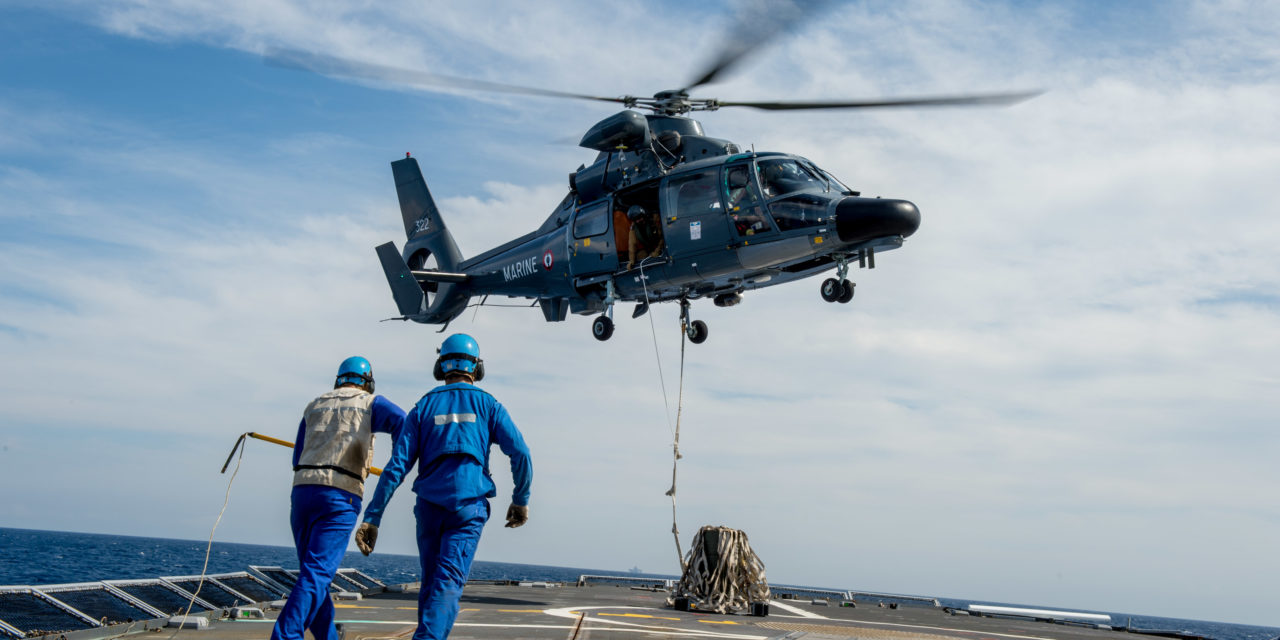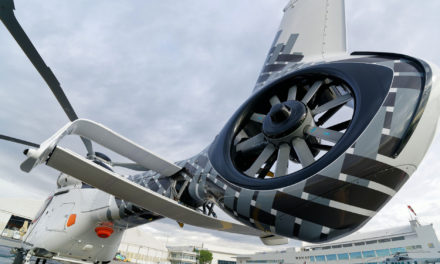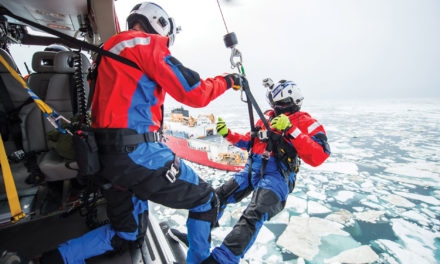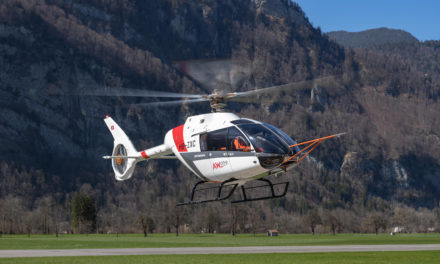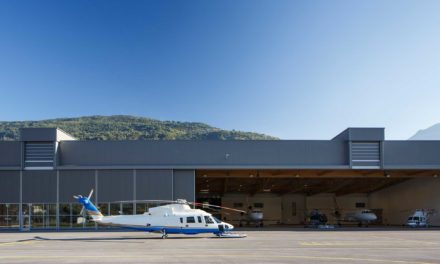By Frédéric Lert
The French Navy is modernising and giving new capacities to its Public Service Dolphins (SP) which can now be embarked at sea. A gain in capacity that also represents for the Navy an important step in the work of homogenising its helicopter fleet.
In this month of May 2020, the French Navy has a very diverse helicopter fleet, combining Alouette 3, Lynx, different types of Dolphin, Panther and Caiman. However, Lynx will be retired from service this summer and by 2022 it will also be the turn of the latest SA319 Alouette. By that time, the French Navy will have a slightly less heterogeneous fleet of Dolphin, Panther and Caiman. The next step will come around 2035, when the Cheetahs (H160M) will have totally replaced the different fleets of Dauphin and Panther.
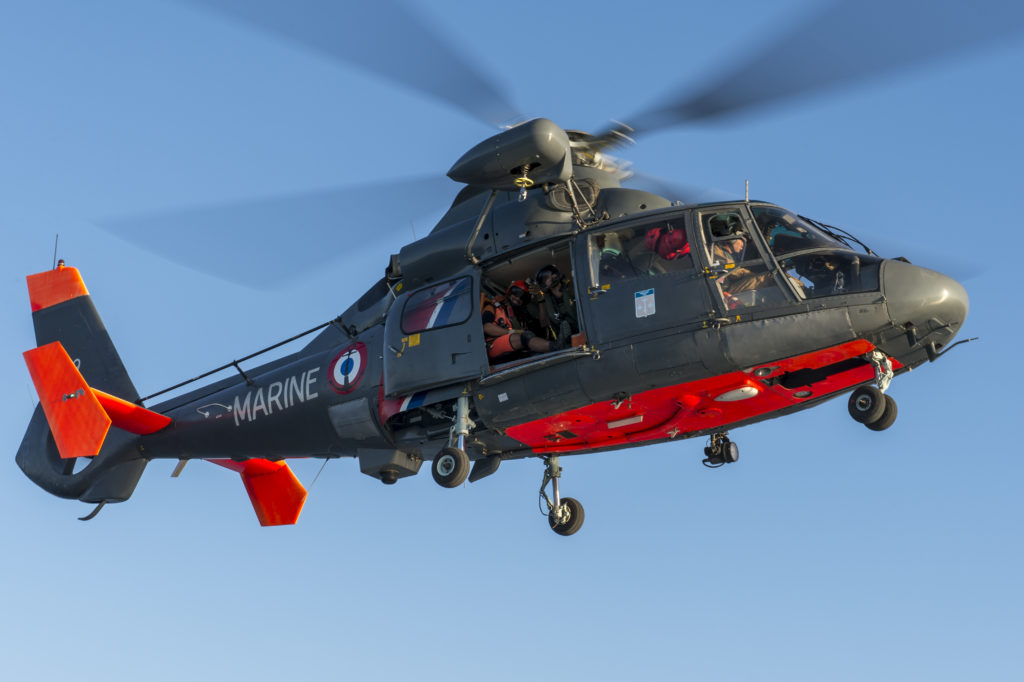
An important milestone was thus reached last month with the first boarding on a Stealth Light Frigates (FLF) of a Public Service Dolphin N (SP Dolphin SP). The Navy has six such aircraft that were previously based solely on land. The Dauphin SPs have been in service since the early 1990s as part of the 35F fleet based in Hyères. These aircraft had then been acquired on the civilian market by the Navy to carry out rescue missions at sea, being based in several coastal towns: Le Touquet, La Rochelle, Cherbourg, Lanvéoc and Hyères have welcomed over the years these Dolphins, which have become in the meantime “Public Service and Intervention”.
In 2020, only Le Touquet and La Rochelle are still armed.
The reduction in the number of land-based units has therefore enabled us to envisage other missions for these aircraft,” explains Commander (CF) S. “We are now able to use the Dauphins for other missions. To anticipate the withdrawal of Lynx and Alouette aircraft from service and limit the risk of capability failure before the arrival of the first Cheetahs, the decision was taken to navalize these public service and intervention dolphins. Embedded on the naval action force ships, the aircraft will be able to carry out sea support, sea rescue and fleet lighting missions, as well as minimum surface situation awareness“.
The navalization of the aircraft began with administrative work between Airbus Helicopters and the DGA to technically demonstrate that the aircraft, originally of civilian manufacture, could meet the demands of the landing. The technical file written by the helicopter manufacturer allowed the DGA to approve this navalization of the Dauphin on a case-by-case basis. However, a modification yard was carried out by Heli Union to adapt the Dauphin to its new role, including in particular the modification of the rotor head to enable the blades to be folded manually and the installation of gripping rings. Independently of navalization issues, the Dauphin has also been equipped with a “low light” instrument panel allowing JVN flight and a GNSS capability allowing breakthroughs and IFR flight with satellite means, in accordance with civil regulations.
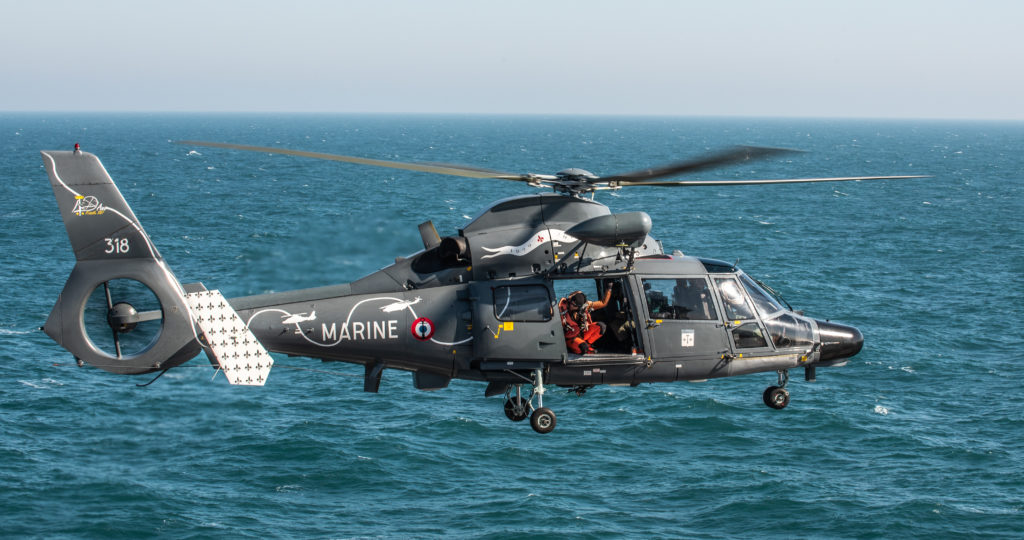
It was not necessary to equip the aircraft with a landing harpoon, notes the CF S. “It was not necessary to equip the aircraft with a landing harpoon. The shipyard would have been too heavy and out of proportion with our real needs: our Dolphins will mainly operate on vessels without a landing grid, and in any case in sea states that do not justify this accessory”.
The modification of the devices was accompanied by a CEPA homologation work (verification of the implementation equipment on the vessels, validation of the field of use…) and by the constitution of the technical autonomy batches for boarding. From 20 to 25 April, the Pre-deployment Operational Refit (RANO) of the frigate La Fayette was the occasion for the first embarkation off Toulon with a Dauphin and its standard detachment of 9 people (two pilots, a cargo chief and six technicians).
This embarkation is an important step in the perpetuation of our know-how in terms of embarkation at sea,” emphasizes the CF S. “We are very pleased to be able to offer this service to the French Navy. The use of a helicopter on a ship involves a complete chain of skills, from piloting and maintenance to the operation of the ship, which is important to maintain. The SPI Dolphins will take part in this effort alongside the other helicopters while awaiting the arrival of the first Cheetahs“.
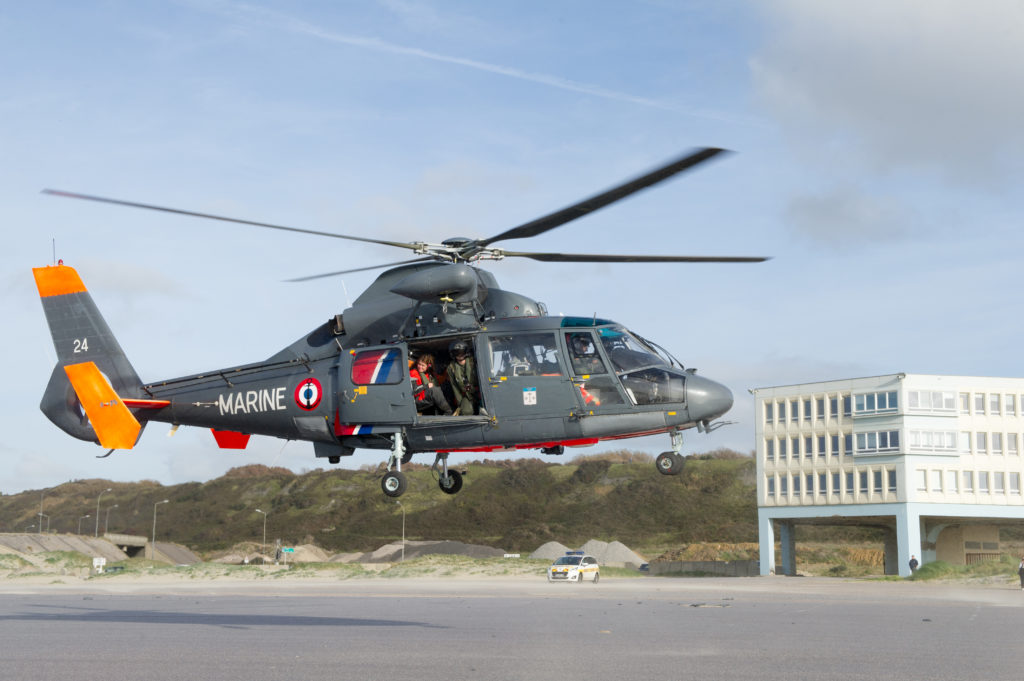
The World of the Dolphin
This embarkation is an important step in the perpetuation of our know-how in terms of embarkation at sea,” emphasizes the CF S. “We are very pleased to be able to offer this service to the French Navy. The use of a helicopter on a ship involves a complete chain of skills, from piloting and maintenance to the operation of the ship, which is important to maintain. The SPI Dolphins will take part in this effort alongside the other helicopters while awaiting the arrival of the first Cheetahs”.
There are about 40 different species of dolphins, all of which are marine mammals. For the French Navy, the number of different models is limited to six, with as many complex micro-fleets to manage. Here are the details :
- 6 Dolphin N public service and intervention (fleet 35F)
- 3 “Pedro” dolphin used for flight safety on the aircraft carrier Charles de Gaulle. (flotilla 35F)
- 4 Rented N3 dolphin used for training missions (implemented within 22S squadron)
- 2 Dolphin N3+ (detachment of the 35F flotilla in Tahiti)
- 12 N3 dolphins are expected to be rented from December 2020 by a consortium of Heli Union and DCI. These aircraft will constitute an interim fleet to wait for the entry into service of the Cheetah.
- Finally, let us mention a close cousin, the Panther, of which 16 examples are in service in the 36F flotilla.

